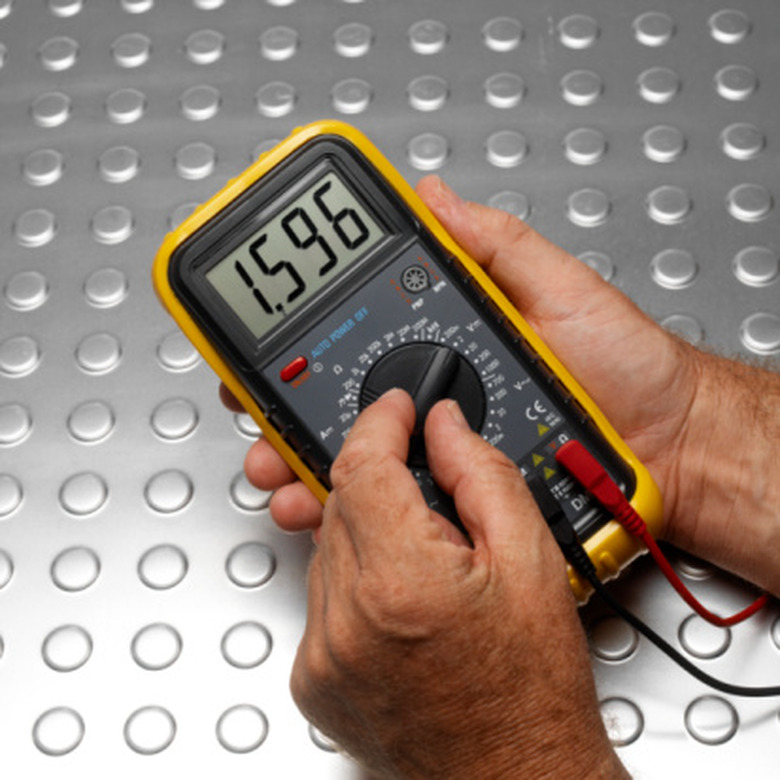How To Convert mW To mA
When an electrical circuit is in use and an appliance of any kind is attached to it, electricians are concerned with four different values; voltage, current, resistance and power. All four values are linked by Ohm's Law, a set of equations that shows the relationships between the main electrical units. Power and current, measured in watts and amps, respectively, are linked via voltage, so thousandths of these values, milliwatts (mW) and milliamps (mA), are also linked via voltage.
Step 1
Divide the value in milliwatts by 1,000, the number of milliwatts in one watt. The result is the value expressed in watts. For example: 2,500 mW / 1,000 = 2.5 W.
Step 2
Divide the watt value by the voltage in the circuit. The result is the current flowing in the circuit, expressed in amps. As an example, a circuit is supplied with 4 volts, and the wattage is 2.5 watts. The current is 0.625 amps because 2.5 / 4 = 0.625.
Step 3
Multiply the current determined in Step 2 by 1,000, the number of milliamps in 1 amp. The result is the current expressed in milliamps. Continuing with the example: 0.625 A / 1,000 = 625 mA.
TL;DR (Too Long; Didn't Read)
Ohm's Law can be remembered as amps = watts / volts.
Cite This Article
MLA
Robinson, David. "How To Convert mW To mA" sciencing.com, https://www.sciencing.com/convert-mw-ma-8627497/. 24 April 2017.
APA
Robinson, David. (2017, April 24). How To Convert mW To mA. sciencing.com. Retrieved from https://www.sciencing.com/convert-mw-ma-8627497/
Chicago
Robinson, David. How To Convert mW To mA last modified March 24, 2022. https://www.sciencing.com/convert-mw-ma-8627497/
